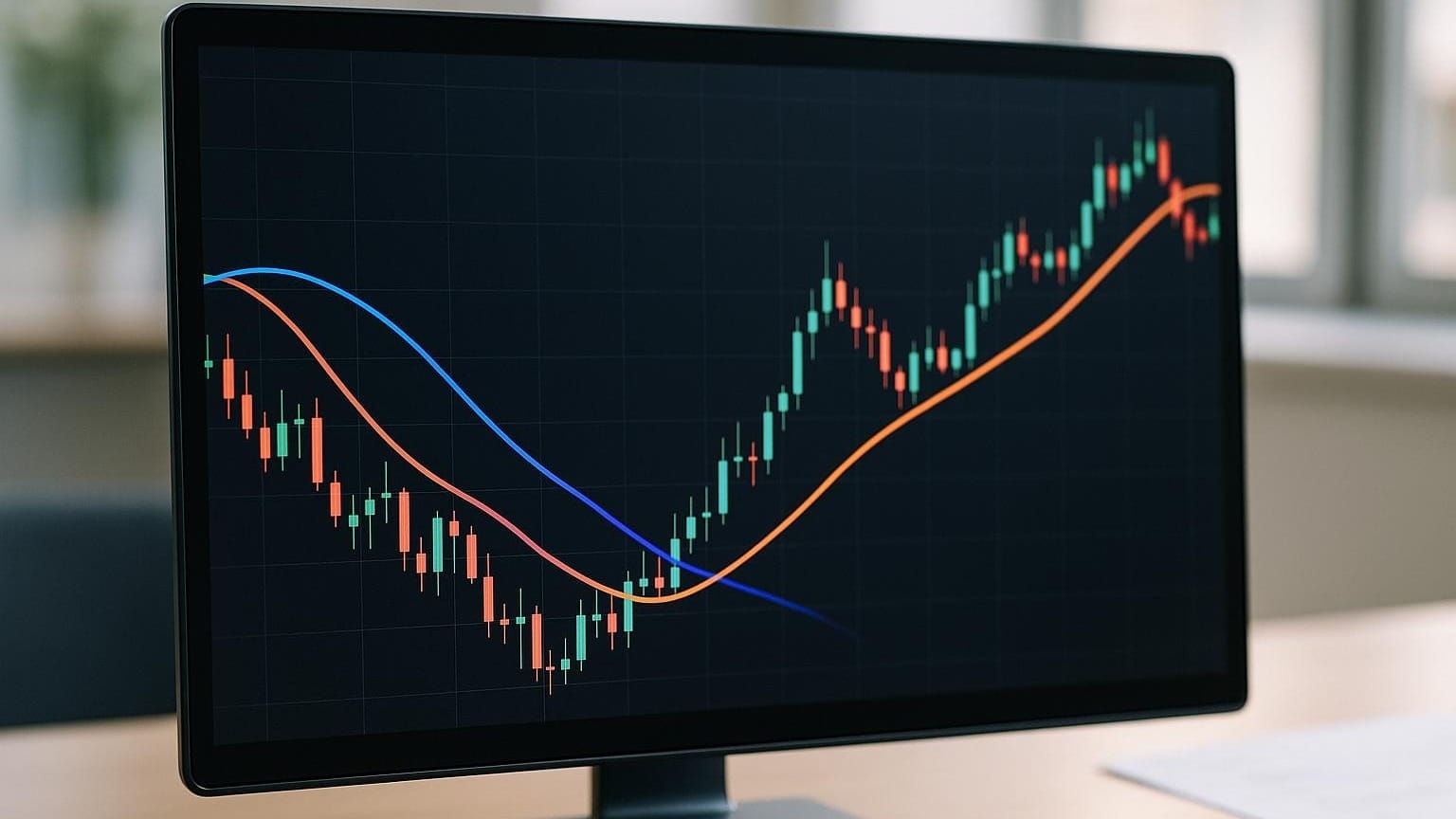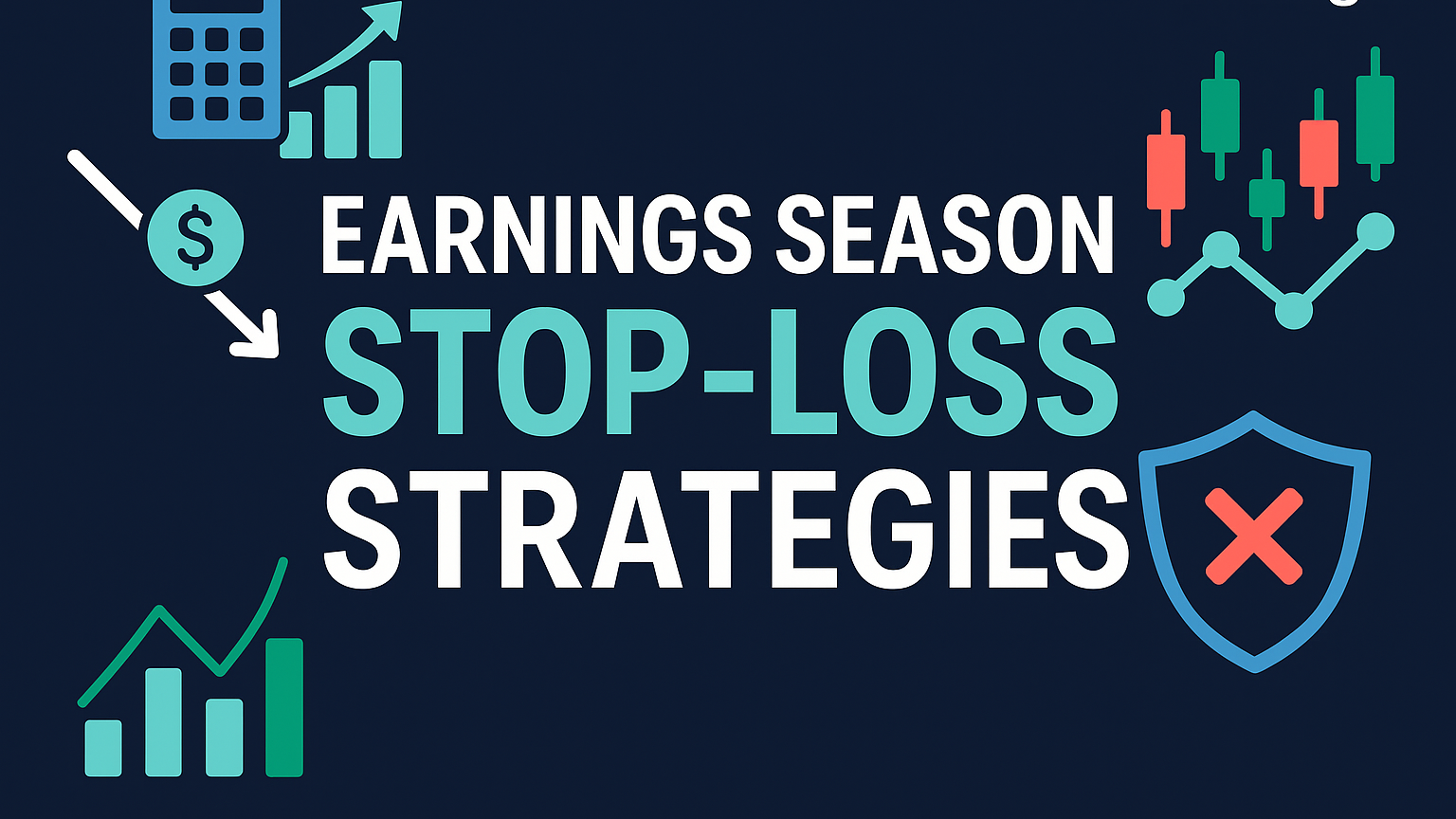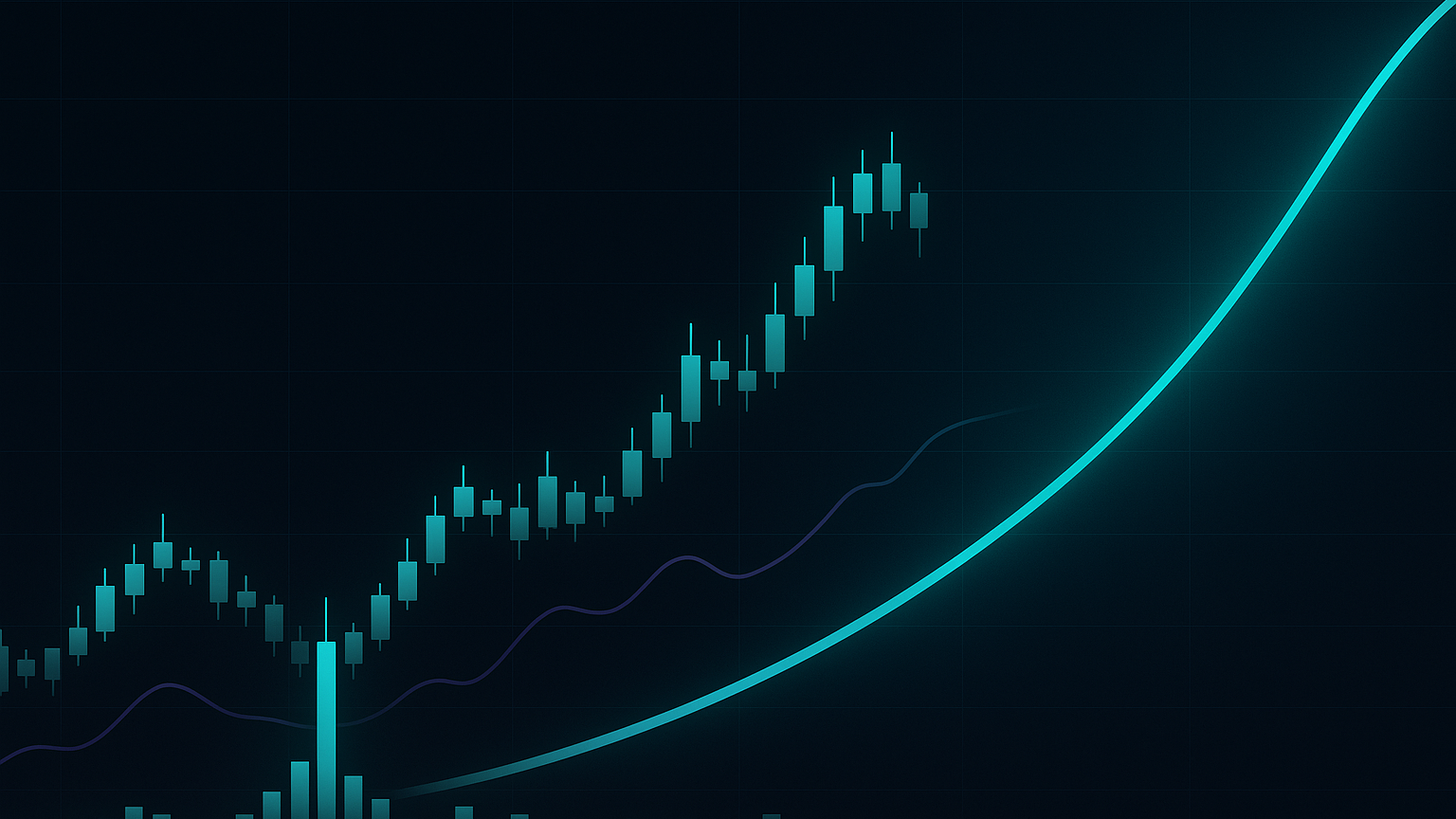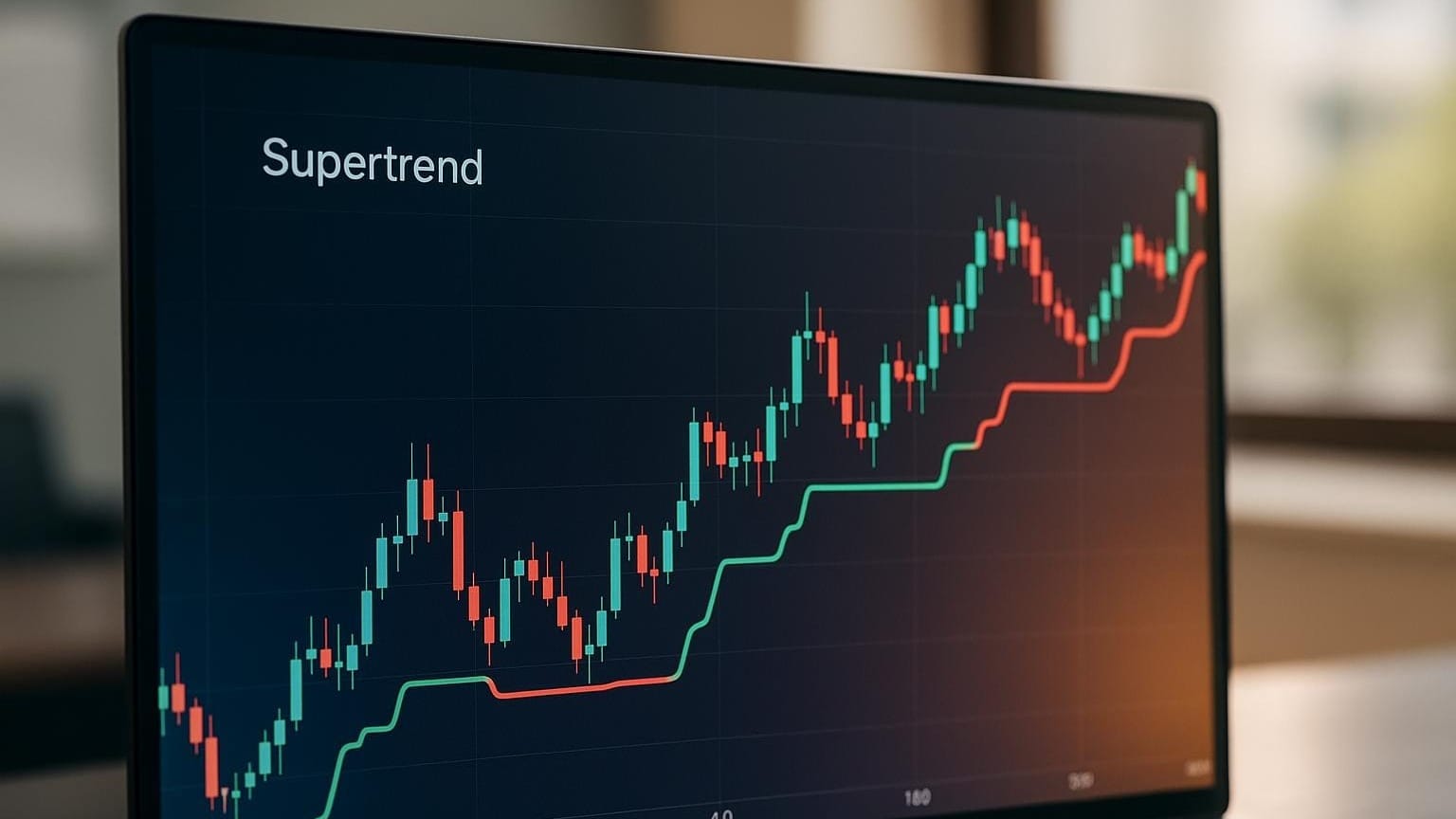Explore two effective moving average crossover strategies for identifying market trends and making informed trading decisions.
These strategies use moving averages to identify trend changes and provide clear buy or sell signals. Here's a quick breakdown:
- Price Crossover Strategy: A single moving average is used. When the price crosses above it, it's a buy signal. When it crosses below, it's a sell signal. Simple and great for quick trades, but prone to false signals in choppy markets.
- Double Moving Average Crossover Strategy: Two moving averages (short-term and long-term) are compared. A "Golden Cross" (short MA crosses above long MA) signals a potential uptrend, while a "Death Cross" (short MA crosses below long MA) signals a downtrend. This method filters out noise and provides more reliable signals but reacts slower.
Quick Comparison
| Aspect | Price Crossover | Double Moving Average Crossover |
|---|---|---|
| Signal Generation | Price crosses a single MA | Short MA crosses long MA |
| Sensitivity | High (more false signals) | Lower (fewer false signals) |
| Best For | Quick trades, scalping | Swing trading, long-term trends |
| Reliability | Moderate (prone to noise) | Higher (filters market noise) |
| Setup Complexity | Simple | Requires two MAs |
Both strategies are effective in trending markets but struggle in sideways conditions. Choose based on your trading goals, timeframe, and risk tolerance.
For even better results, combine these strategies with tools like RSI or MACD for confirmation, and always use stop-loss orders to manage risk.
Moving Average Crossovers: Filtering Out Whipsaws – 4 Methods
Moving Average Price Crossover Strategy
The price crossover strategy is one of the simplest methods to analyze trends, focusing on how an asset's current price interacts with a single moving average. It’s a straightforward approach that helps traders spot potential entry and exit points by generating buy signals when prices move upward across the moving average and sell signals when they move downward. For a deeper primer, see Moving Average Crossovers for Entry and Exit.
How the Price Crossover Works
This method is easy to grasp. First, plot a moving average of your chosen length on the price chart. Then, watch for moments when the price decisively crosses this line. To confirm the signal, wait for a full candle to close on the other side of the moving average and check for increased trading volume as additional validation [3].
- A price crossing above the moving average signals a bullish trend, suggesting the asset might be heading into an uptrend.
- A price crossing below the moving average signals a bearish trend, hinting at a potential downtrend.
Common Use Cases and Interpretation
The effectiveness of this strategy depends heavily on the moving average period you choose, which should align with your trading style and goals. If you’re new to MA selection, this overview helps: Moving Averages: Essential Trend Analysis.
- Short-term traders often prefer 5- or 10-day moving averages to capture quick price movements.
- Medium-term traders may opt for 20- or 50-day moving averages, which strike a balance between responsiveness and stability.
- Long-term investors usually rely on 100- or 200-day moving averages, which smooth out short-term noise and focus on long-term trends.
In addition to signaling potential buy or sell opportunities, moving averages can act as dynamic support or resistance levels (see How Moving Averages Act as Support and Resistance and How to Use Moving Averages with Support and Resistance). During an uptrend, the MA often serves as support, while in a downtrend it can act as resistance.
Pros and Cons
Like any strategy, the price crossover approach has its strengths and weaknesses:
| Advantages | Disadvantages |
|---|---|
| Easy to learn and apply – Clear rules make it beginner-friendly [1] | Lagging indicator – Signals often come after trends have already started, missing early opportunities [1] |
| Good for trend-following – Helps traders capitalize on established trends [1] | Prone to false signals in choppy markets – Sideways or volatile markets can lead to multiple whipsaws [1] |
| Simple to backtest – The well-defined rules make historical testing straightforward [4] | Risk of large losses – Delayed signals in volatile markets can result in significant drawdowns [4] |
| Limits overtrading – Slower signals can help avoid excessive trading [4] | No predictive ability – Moving averages reflect past prices and don’t forecast future movements [4] |
This strategy performs best in markets with clear, strong trends. However, during sideways or range-bound periods, frequent crossovers can produce misleading signals, potentially leading to losses.
To improve the reliability of the price crossover strategy, consider combining it with other indicators like the RSI or Stochastic Oscillator [3]. Additionally, setting stop-loss orders is essential for managing risk. For bullish trades, placing a stop just below the moving average or the recent swing low can help limit losses. For bearish trades, a stop slightly above the moving average or recent swing high is advisable [3].
While price crossovers are useful, they work best when integrated into a broader trading system that includes sound risk management. In the next section, we’ll explore the double moving average crossover strategy, which offers a more nuanced way to analyze market trends.
Double Moving Average Crossover Strategy
The double moving average crossover strategy uses two moving averages of different lengths to generate buy and sell signals. This approach helps confirm trends more clearly and reduces the likelihood of false signals.
How the Double Moving Average Crossover Works
The strategy is straightforward: when a short-term moving average crosses above a long-term moving average, it signals a potential upward trend. On the flip side, when the short-term moving average drops below the long-term one, it suggests a downward trend might be forming. For practical setups, see Moving Average Crossovers for Entry and Exit.
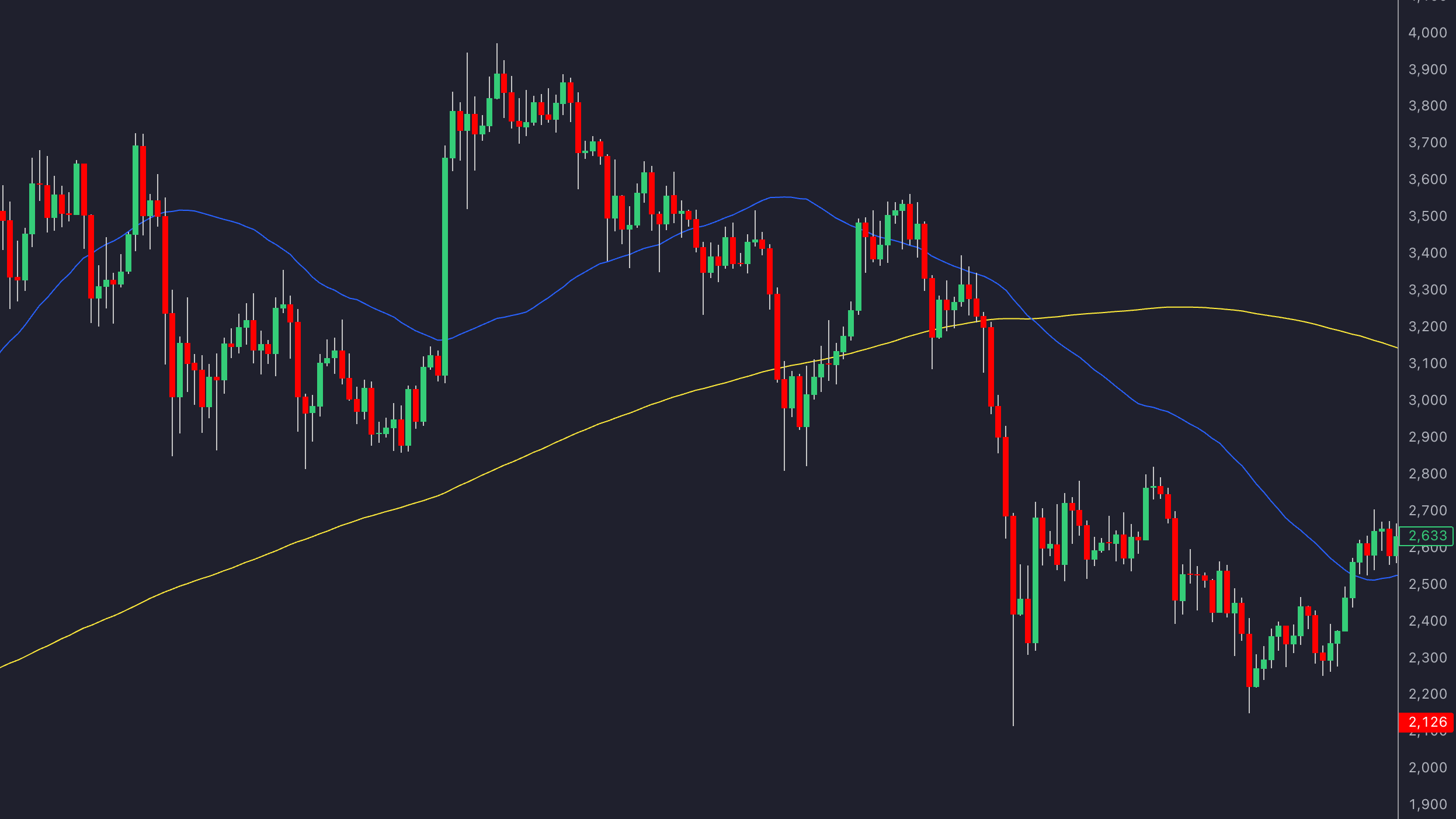
| Crossover Type | Signal | Market Implication |
|---|---|---|
| Golden Cross | Short MA crosses above Long MA | Indicates a Buy Signal |
| Death Cross | Short MA crosses below Long MA | Indicates a Sell Signal |
By relying on two moving averages instead of one, this method filters out much of the market noise, making it more reliable than single moving average strategies.
Choosing Moving Average Types and Periods
The choice of moving average type depends on your trading style. Here’s a quick breakdown:
- Simple Moving Averages (SMA): These apply equal weight to all data points, producing smoother signals. They’re often preferred for long-term analysis.
- Exponential Moving Averages (EMA): These give more weight to recent prices, making them more responsive to the latest market movements. While quicker to react, they’re also more sensitive to short-term price changes.
"The 10 day exponential moving average (EMA) is my favorite indicator to determine the major trend... When you are trading above the 10 day, you have the green light, the market is in positive mode and you should be thinking buy. Conversely, trading below the average is a red light. The market is in a negative mode and you should be thinking sell." - Marty Schwartz, Market Wizard [6]
Period selection is equally important. Common lookback periods include 10, 20, 50, 100, and 200. These can be applied to various timeframes—minutes, hours, days, or weeks—depending on your trading approach. You can also reference our Top 5 Moving Average Breakout Strategies for additional combinations.
Here’s how different moving average combinations align with trading styles:
| Moving Average Combination | Trading Style | Timeframe | Responsiveness | Signal Reliability |
|---|---|---|---|---|
| 5 and 9 | Scalping | Short-term | High | Low |
| 9 and 21 | Day Trading | Medium-term | Medium | Medium |
| 50 and 200 | Swing Trading | Long-term | Low | High |
For short timeframes, such as one-hour charts, traders often prefer EMAs since they react quickly to price changes. For longer timeframes, like daily or weekly charts, SMAs are better suited as they smooth out short-term fluctuations.
In a one-month trial using the 9 and 21 EMA crossover on the EUR/USD pair with a one-hour timeframe, traders achieved a 60% win rate. With an average 3:1 risk-reward ratio, this setup generated a total profit of 7.7R across five trades [5].
Once you’ve chosen the right moving average settings, the next step is to focus on managing risks and dealing with market challenges.
Managing Whipsaws and Timeframes
Even though this strategy is robust, it’s not immune to challenges. One common issue is dealing with “whipsaws”—false signals caused by rapid crossovers in volatile or choppy markets. These can lead to unnecessary trades and losses.
To reduce the impact of whipsaws, adjust your timeframe. Longer timeframes tend to filter out noise, while shorter ones provide quicker signals but may increase the frequency of false crossovers. For instance, shorter timeframes might work better in highly volatile markets, while longer timeframes are more effective in calmer conditions.
Using additional indicators alongside the double moving average crossover can also help confirm trends. Tools like the Relative Strength Index (RSI), MACD, or Stochastic RSI can provide extra validation before entering a trade.
Risk management is crucial in this strategy. Set tight stop-losses and clear profit targets to protect your capital. As trends develop, consider adjusting your stop-loss to lock in gains. Analyzing multiple timeframes can also offer valuable insights—if signals differ across daily, weekly, and monthly charts, prioritizing the longer timeframe can help align your trade with the broader market trend.
Avoid trading in sideways or choppy markets, as these conditions often produce unreliable signals. Tools like the ADX (see our DMI/ADX guide) can help identify when the market lacks a clear trend.
The double moving average crossover strategy is most effective in trending markets. By carefully selecting moving average types and periods, managing whipsaws, and adapting to different timeframes, you can develop a disciplined and effective approach to trend identification and trade execution. This strategy builds on the earlier price crossover method, offering stronger signals and better risk control.
Comparing the 2 Crossover Strategies
Both strategies aim to pinpoint trend reversals, but they differ in how they generate signals and handle market noise. By understanding these differences, you can choose the approach that best suits your trading style and the current market environment.
Comparison Table: Price vs. Double Moving Average Crossover
| Aspect | Price Crossover Strategy | Double Moving Average Crossover Strategy |
|---|---|---|
| Signal Generation | Price crossing above or below a single moving average | Short-term moving average crossing above or below a long-term moving average |
| Vulnerability to Market Noise | Higher sensitivity to short-term fluctuations [1] | Lower sensitivity due to dual moving average filtering [1] |
| Signal Frequency | Generates more frequent signals | Produces fewer but potentially more reliable signals |
| False Signal Rate | Higher rate of false signals [1] | Lower rate, though still susceptible to whipsaws [1] |
| Best Market Conditions | Works well in trending markets with clear directional moves | Performs best in strong trending markets [5] |
| Complexity | Simple setup requiring only one moving average | Requires two moving averages with different time periods |
| Responsiveness | Reacts quickly to price changes | Slower but provides more confirmed signals |
| Risk Level | Higher risk due to frequent false signals | Moderate risk with better trend confirmation |
This table highlights how each strategy aligns with different trading goals and risk preferences, helping traders make informed decisions based on their needs.
The price crossover strategy focuses on the asset price relative to a moving average, making it more responsive to immediate market shifts [1]. On the other hand, the double moving average crossover strategy compares two moving averages of different lengths, creating a filter that reduces noise. For example, the Golden Cross occurs when a short-term moving average crosses above a long-term one, signaling a bullish trend, while the Death Cross indicates the opposite.
False signal rates are a key consideration. A study of the S&P 500 from 1960 to 2025 found that basic moving average crossover systems had false signal rates ranging from 57% to 76%. Interestingly, shorter lookback periods showed higher win rates of up to 43%, while longer periods had win rates as low as 24% [7].
When to Use Each Strategy
Each strategy shines under specific conditions, and your choice depends on your trading style and objectives.
The price crossover strategy is ideal for traders seeking quick entries and exits. Its higher signal frequency makes it a go-to for day traders and scalpers who need to react swiftly to market movements. This method works particularly well for identifying trend reversals or continuation signals [2]. For instance, it can help avoid short positions when an asset is climbing above a steadily increasing moving average [2].
The double moving average crossover strategy, on the other hand, is better suited for traders who prioritize reliability over speed. Swing traders and position traders benefit from its stronger trend confirmation, making it a solid choice for markets with clear, sustained trends [5]. By using two moving averages, this method filters out much of the noise that can lead to false signals in the price crossover approach.
In range-bound markets, both strategies are prone to generating false signals. However, the double moving average approach typically handles these conditions better, producing fewer whipsaws [1]. During strong trends, the price crossover strategy captures moves earlier, while the double moving average system offers greater confidence in the trend's durability.
Your risk tolerance also plays a key role. If you're comfortable with frequent trades and can handle a higher rate of false signals, the price crossover strategy offers more opportunities. For a more conservative approach with fewer but potentially more profitable trades, the double moving average crossover provides a built-in confirmation mechanism for better risk management.
Adding additional indicators to your analysis can further reduce false signals and enhance the reliability of either strategy. Consider momentum indicators compared and multi-timeframe confirmation to strengthen entries.
Improving Crossover Strategies with LuxAlgo

Traditional moving average crossover strategies are a reliable starting point for trend analysis, but modern tools take them to the next level. LuxAlgo provides tools on TradingView that help traders refine crossover signals with confirmations, alerts, and scanning. LuxAlgo also offers a free Library of indicators, plus exclusive tools like Toolkits, Screeners, and Backtesters. For end-to-end strategy creation, see the AI Backtesting Assistant.
Overview of LuxAlgo's Capabilities
LuxAlgo offers an extensive range of trading tools for TradingView and supports additional platforms. At the heart of LuxAlgo’s offering are three TradingView toolkits designed to enhance crossover strategies:
- Price Action Concepts (PAC): Automates structure, S/R, trendlines, and pattern detection.
- Signals & Overlays (S&O): Provides signal algorithms paired with overlay visualizations for clearer entries and exits.
- Oscillator Matrix (OSC): Focuses on money-flow based trend analysis and real-time divergences.
Each toolkit can be paired with screeners and backtesting tools—for example, the Backtester (S&O) overview and its Entry Rules pages. This workflow helps you move from idea to validation quickly.
Using LuxAlgo's Indicators for Crossover Strategies
Building on traditional moving average methods, LuxAlgo’s Signals & Overlays toolkit enhances crossovers by confirming signals and validating trends. See our articles on adding momentum scans and volume to strengthen entries.
The Oscillator Matrix adds another layer by monitoring money flow and divergences—e.g., Smart Money Flow Readings or HyperWave Signals can flag weakening trends before the MA cross occurs.
LuxAlgo also provides automated alerts and scanning. You can set alerts from our toolkits and test rule-sets with Backtester (S&O) or Backtester (PAC), then iterate on parameters such as MA lengths or confirmation filters.
Benefits of AI Backtesting and Community Support
To tackle false signals and optimize strategies, LuxAlgo offers an AI Backtesting Assistant. Explore the introduction and how strategy fetching works. The platform helps you discover, test, and fine-tune strategies quickly across assets and timeframes.
Plans: Free plan ($0) includes hundreds of tools across multiple platforms. Premium ($39.99/mo) adds advanced signals, alerts, and oscillator tools on TradingView. Ultimate ($59.99/mo) includes the AI Backtesting platform.
Finally, LuxAlgo emphasizes education and community support. Articles like A Beginner’s Guide to Technical Indicators and Continuation Patterns & Indicators help you refine crossover strategies with practical, testable guidance.
Conclusion: Key Takeaways
Recap of the 2 Crossover Strategies
The two moving average crossover strategies discussed are essential methods for spotting trend shifts, each with its own approach. The Price Crossover Strategy focuses on a single moving average, where price crossing above it signals bullish momentum, and crossing below suggests bearish pressure.
On the other hand, the Double Moving Average Crossover Strategy involves two moving averages of different timeframes. When a shorter-term moving average crosses above a longer-term one (commonly known as a Golden Cross), it points to a potential uptrend. A reverse cross, often called a Death Cross, signals a potential downtrend.
Both strategies aim to generate buy and sell signals. Price crossovers respond more quickly to market changes but can produce false signals in volatile markets. Double moving average crossovers, while more reliable, tend to lag behind actual market movements. It’s important to note that both strategies are lagging indicators, meaning they confirm trends only after they’ve started[1]. These methods can be further refined by incorporating advanced analytical tools.
The Role of Advanced Tools in Trading Success
While these crossover strategies form a strong starting point, modern tools can elevate their effectiveness. LuxAlgo enhances traditional methods, offering traders a more refined approach. For instance, the Signals & Overlays toolkit provides additional confirmation for crossover signals, while the Oscillator Matrix helps identify potential trend weaknesses in real time.
LuxAlgo features such as backtesting (S&O Backtester), real-time alerts, and a comprehensive documentation hub allow users to fine-tune their strategies. These resources help traders adapt to changing market conditions and validate rules before risking capital.
Success in trading comes from blending strong foundational strategies with advanced tools and insights. By combining moving average crossovers with other technical indicators and fundamental analysis[1], traders can build a more reliable framework for long-term success.
FAQs
How can I avoid false signals when using moving average crossover strategies?
To cut down on false signals in moving average crossover strategies, try pairing them with other technical tools like the Relative Strength Index (RSI) or MACD. These indicators can help verify trends and filter out unnecessary market noise, making your signals more dependable. For examples, see RSI Entry Signals and MACD Divergence Screening.
Another approach is to focus on longer timeframes. Longer periods tend to smooth out volatility, offering clearer and more consistent signals compared to shorter timeframes. Lastly, establish well-defined entry and exit rules by aligning multiple indicators or key price levels. This can help fine-tune your strategy and lower the chances of reacting to misleading signals.
What other indicators can complement moving average crossover strategies for better accuracy?
To make moving average crossover strategies more precise, consider combining them with indicators like the Relative Strength Index (RSI) and Moving Average Convergence Divergence (MACD). The RSI is useful for spotting overbought or oversold conditions, which often hint at potential market reversals. Meanwhile, the MACD helps confirm trends and identify momentum changes. You can also experiment with VWAP and momentum indicators to strengthen your confirmation stack.
By integrating these tools with moving averages, you can reduce the chances of false signals and gain a better understanding of market dynamics. For added accuracy, incorporate multi-timeframe analysis (how-to guide) to fine-tune your entry and exit points.
When do moving average crossover strategies work best, and how can I adapt them for sideways markets?
Moving average crossover strategies work best in markets with clear trends, whether prices are climbing or dropping. When a short-term moving average crosses above a long-term moving average, it often points to a buy opportunity. On the other hand, when the short-term average dips below the long-term average, it's usually seen as a sell signal. These strategies are a straightforward way to spot and ride trends.
However, when the market moves sideways—prices fluctuating within a tight range without a clear direction—these strategies can generate false signals, which might lead to losses. To navigate such conditions, pair crossover methods with tools like Bollinger Bands, ADX (guide), or beginner indicator combinations. Additionally, using tighter stop-loss orders and focusing on smaller, more frequent trades can help you manage risk during low-volatility periods.
References
- Understanding Moving Averages and How Traders Use Them
- The Key to Understanding RSI (Relative Strength Index)
- LuxAlgo | AI Backtesting Assistant
- AI Backtesting Assistant: Introduction
- Moving Averages: Essential Trend Analysis Tool
- RSI Indicator Trading Strategy: Basics and Rules
- Intro | Backtester (S&O)
- How to Use Moving Averages with Support and Resistance
- RSI Indicator Entry Signals: How They Work
- Docs | Learn All Features | LuxAlgo
- How Moving Averages Act as Support and Resistance
- Entry Rules | Backtester (S&O)
- Fetching Strategies – AI Backtesting Assistant
- Top 5 Moving Average Breakout Strategies
- Moving Average Crossovers for Entry and Exit
- TradingView
- StockCharts ChartSchool: Price to MA Crossovers
- TrendSpider: Moving Average Crossover Strategies
- Investopedia: How to Use Moving Averages to Buy Stocks
- Quantified Strategies: False Signals in MA Trading
- TradeThatSwing: Do Moving Averages Really Work?
- HowToTrade: Double Moving Average Crossover
- Tradeciety: How to Use Moving Averages
- Investopedia: EUR/USD Pair



